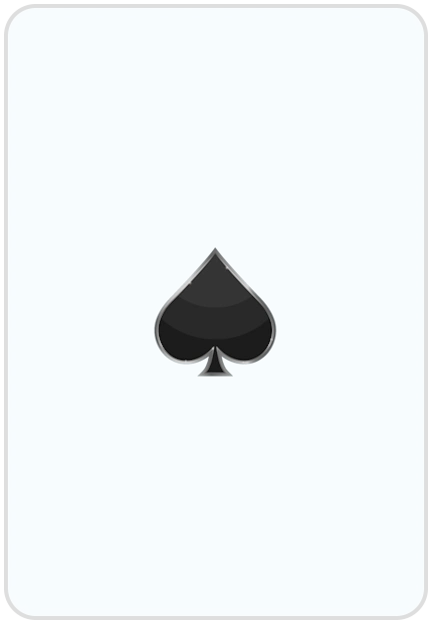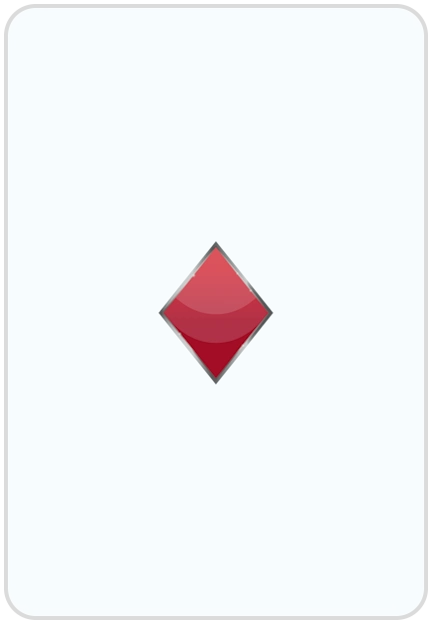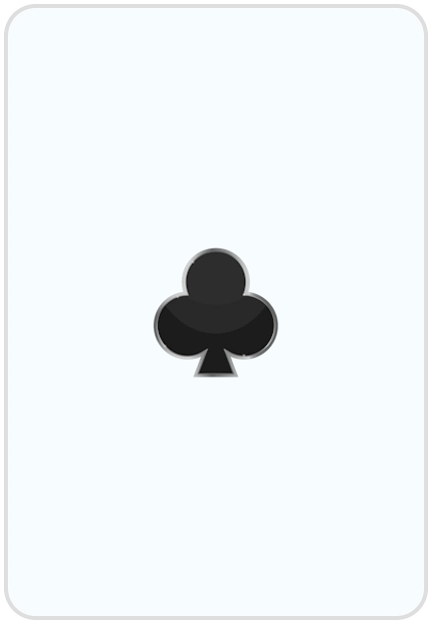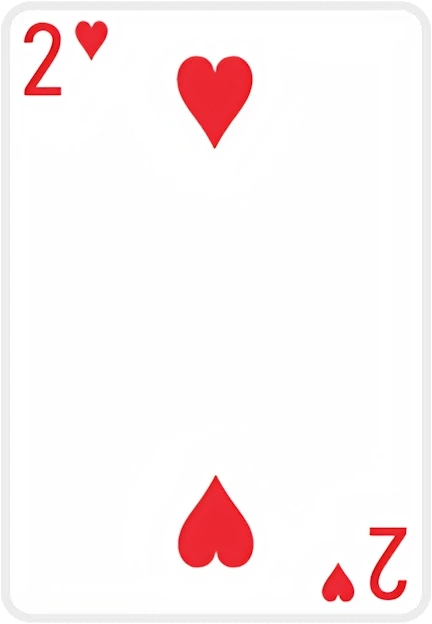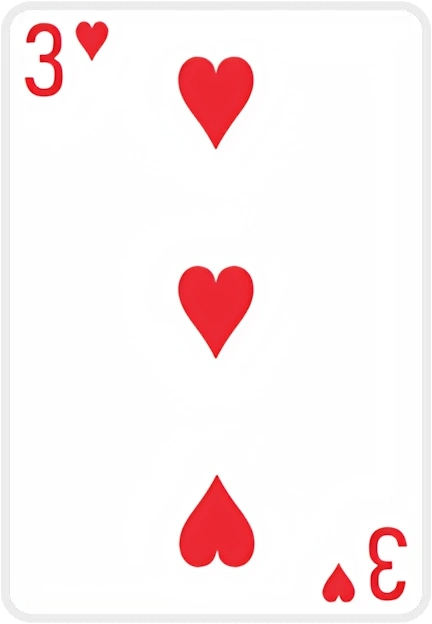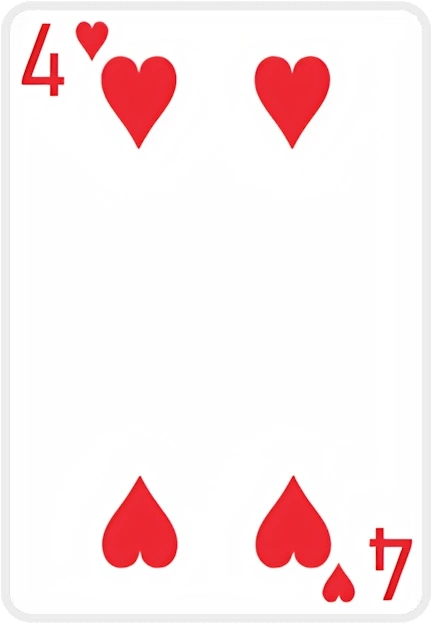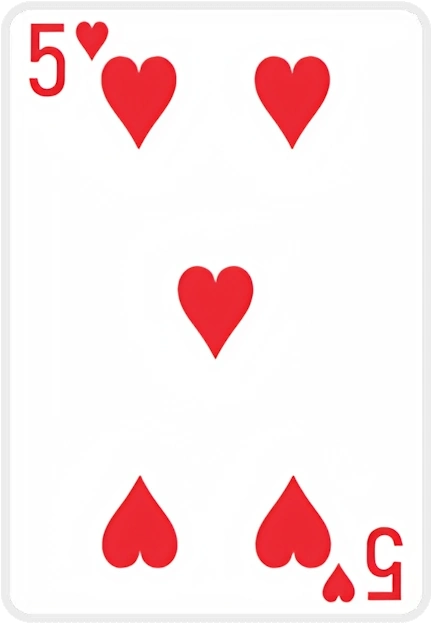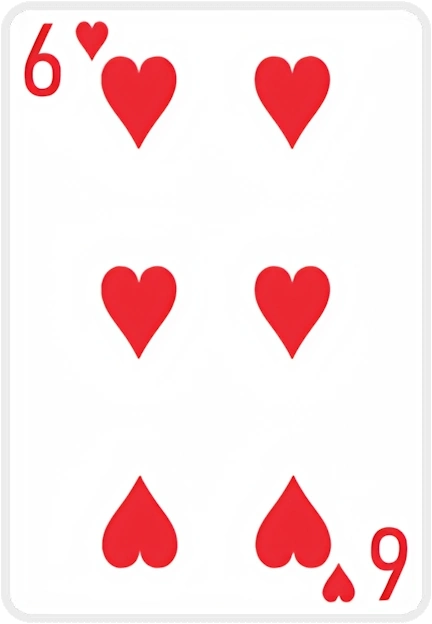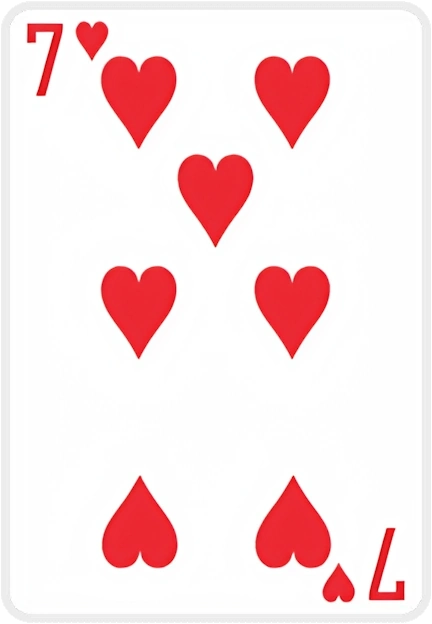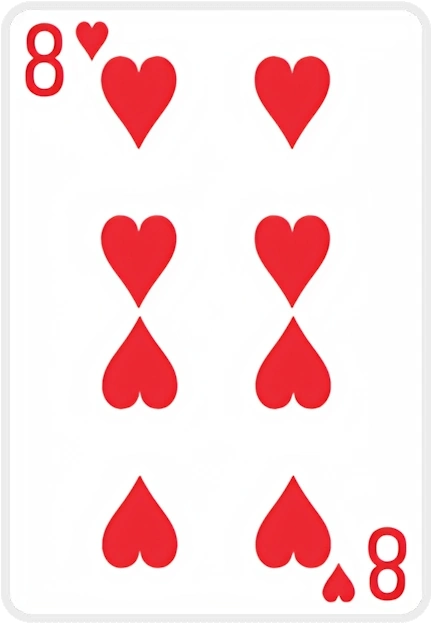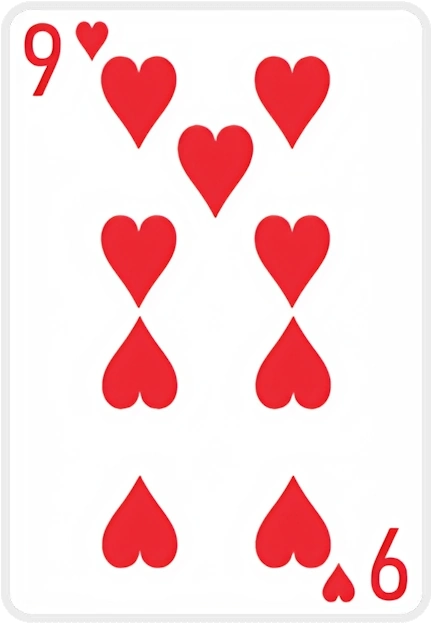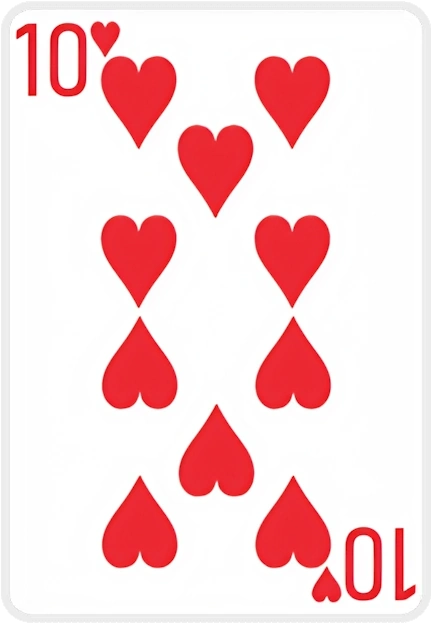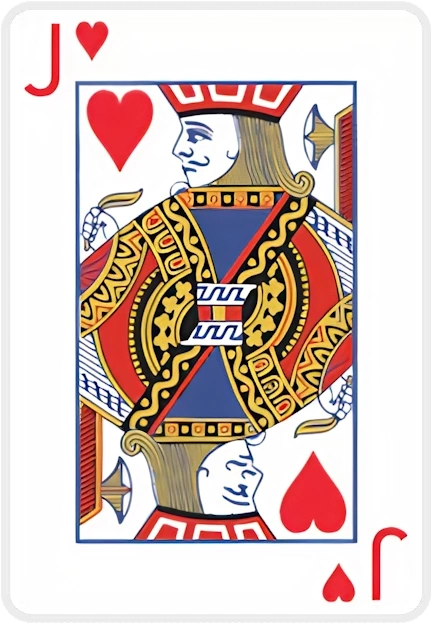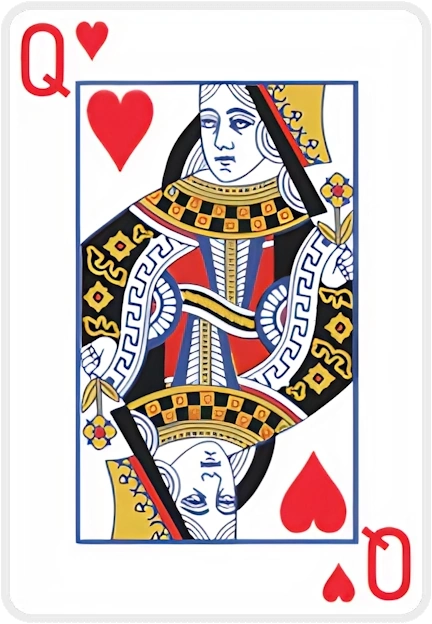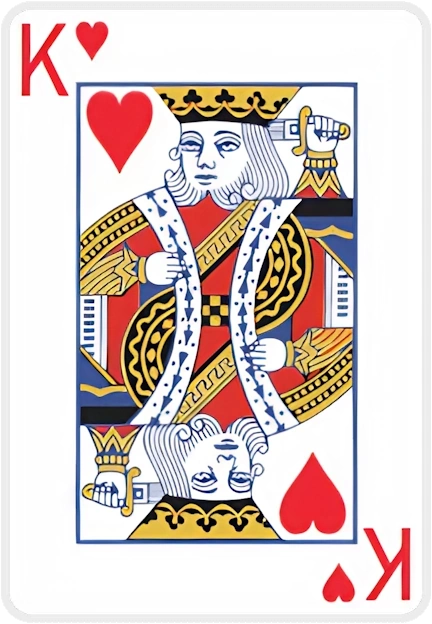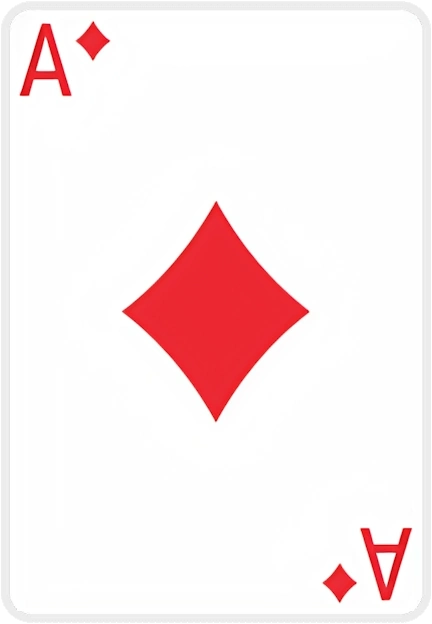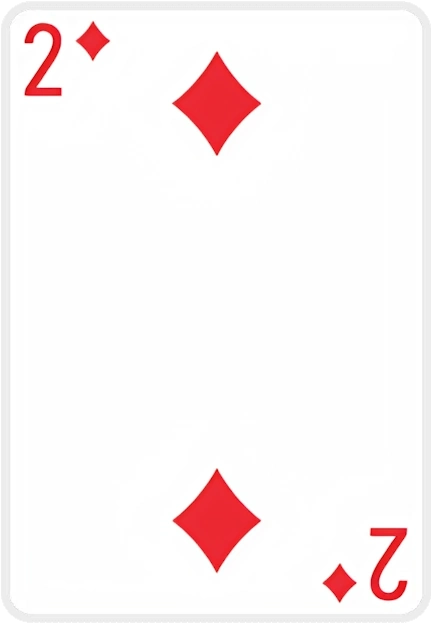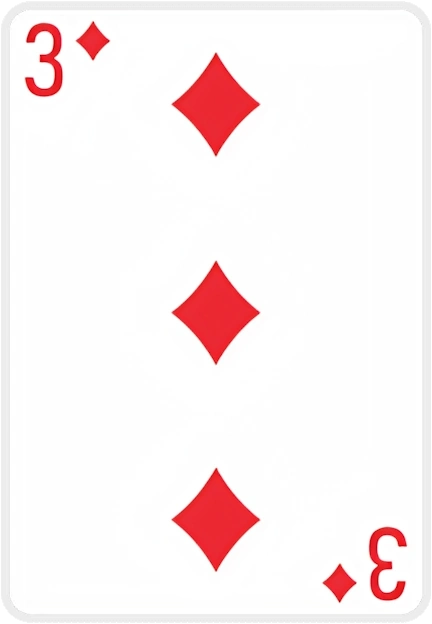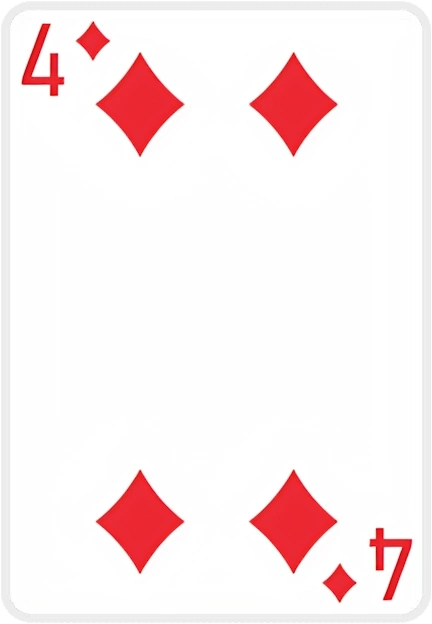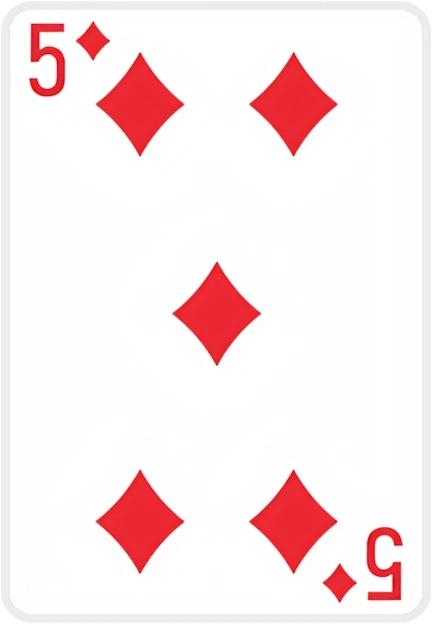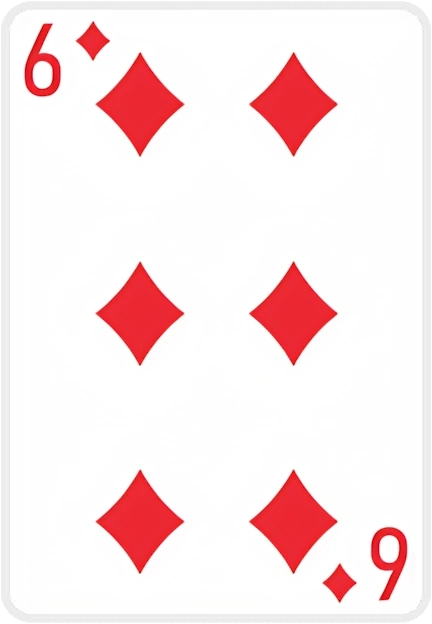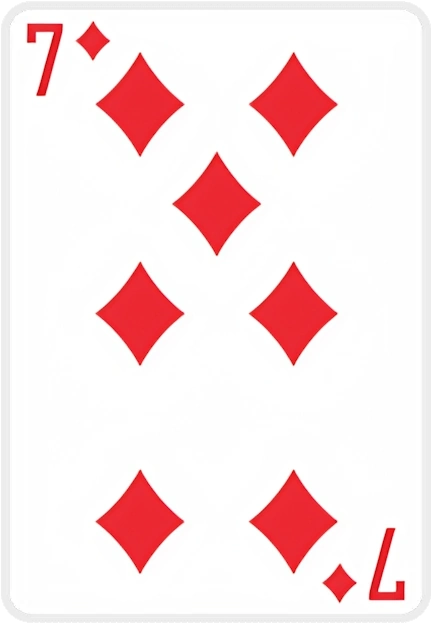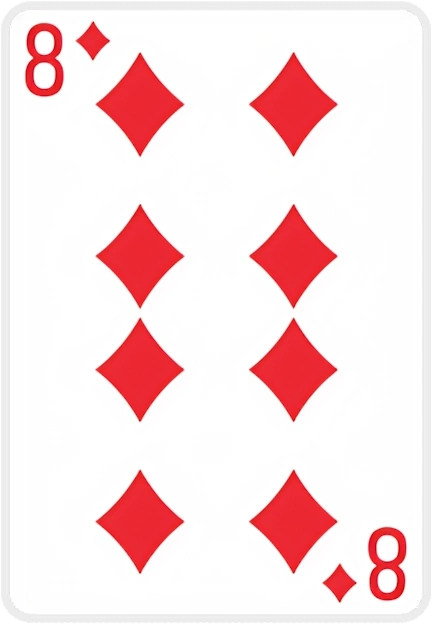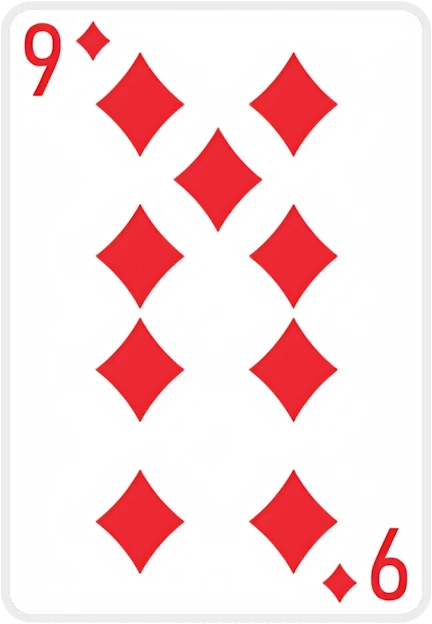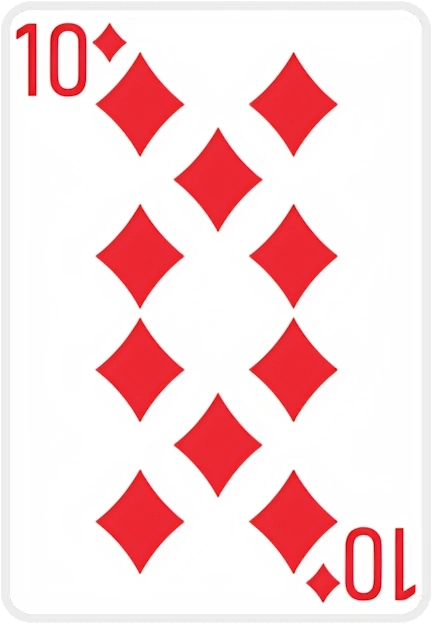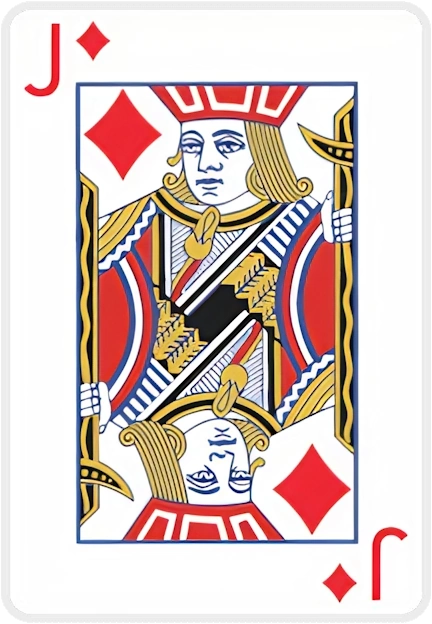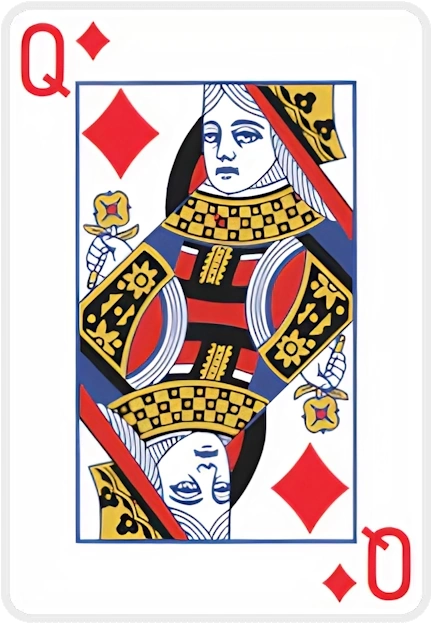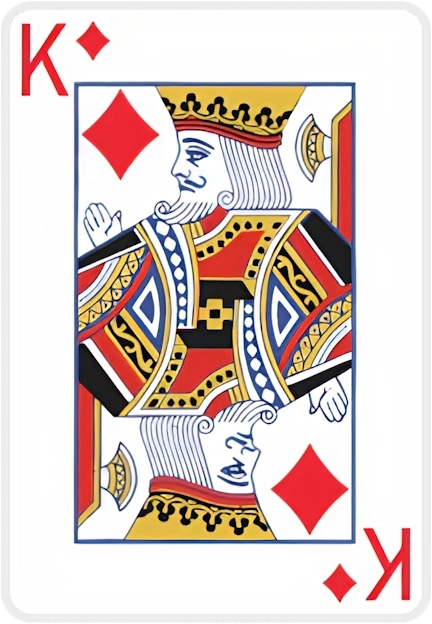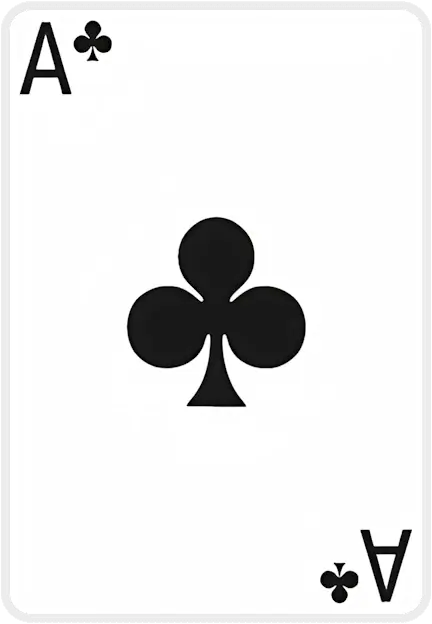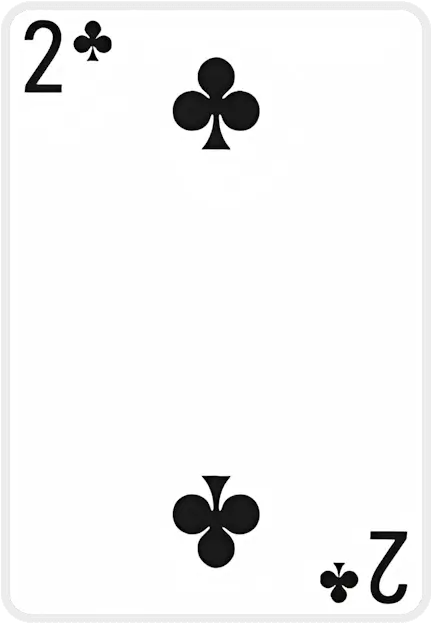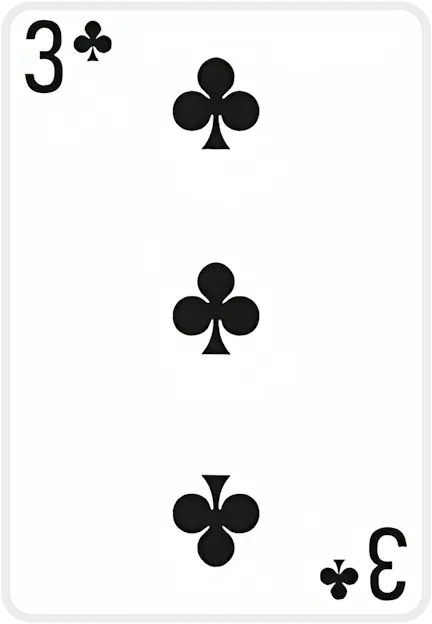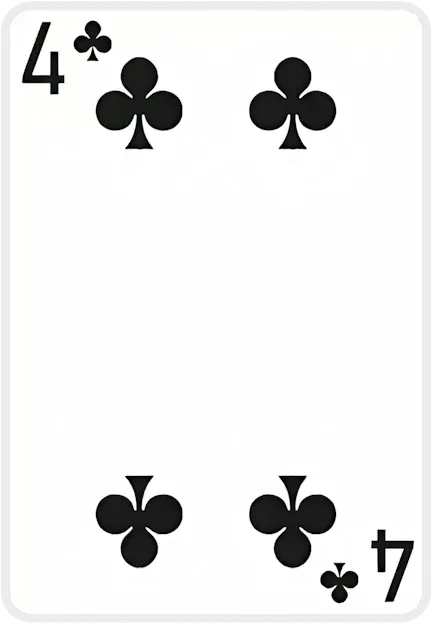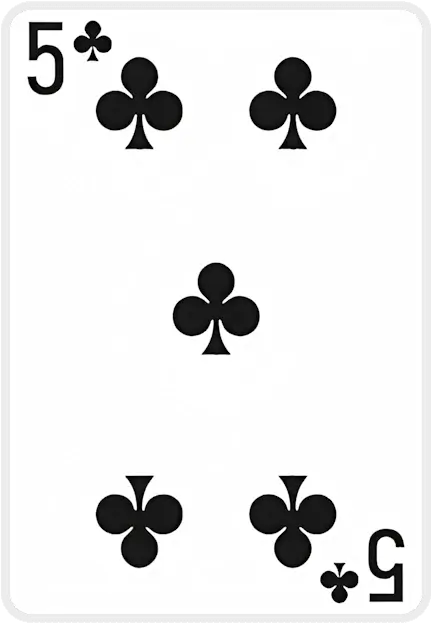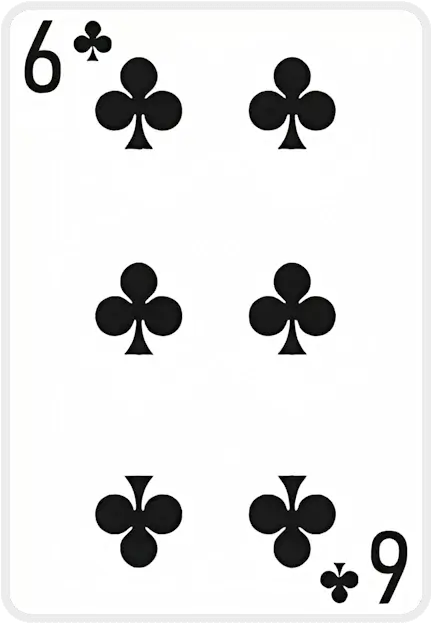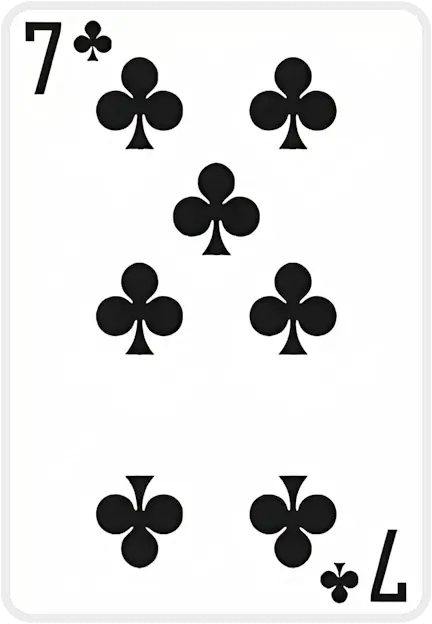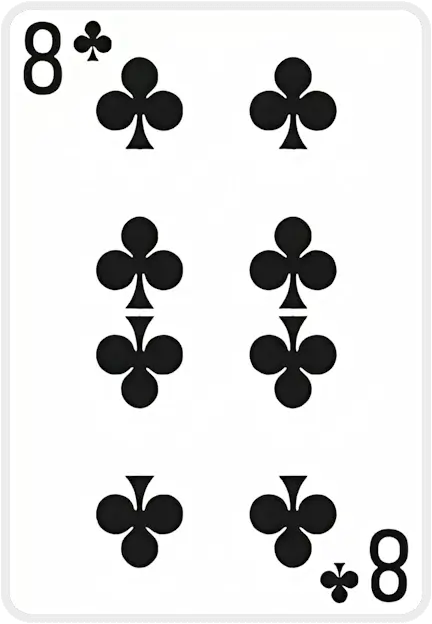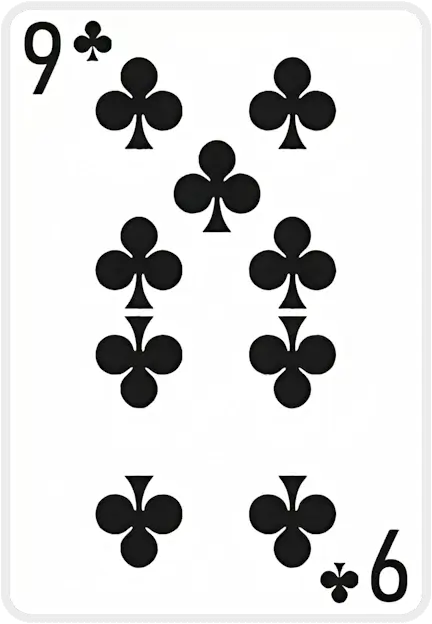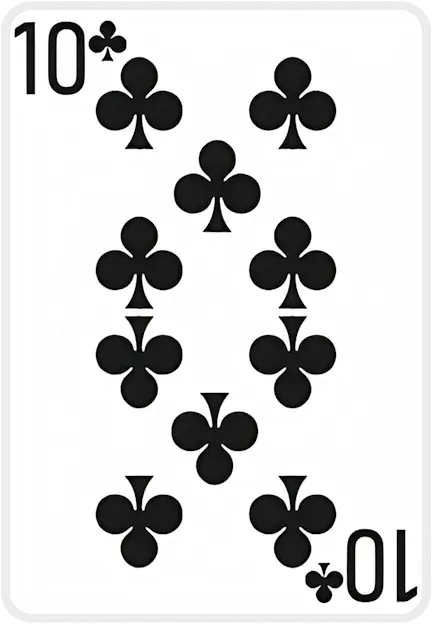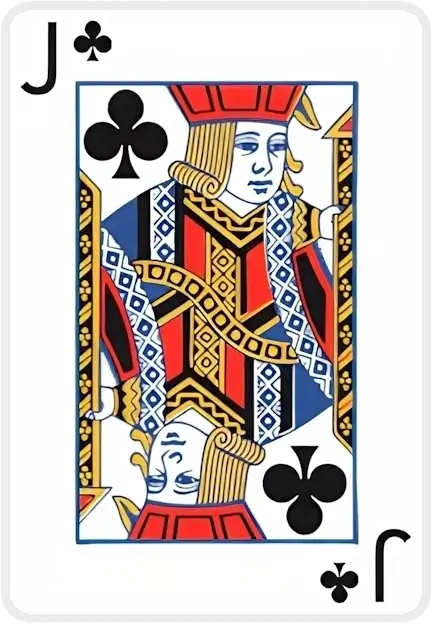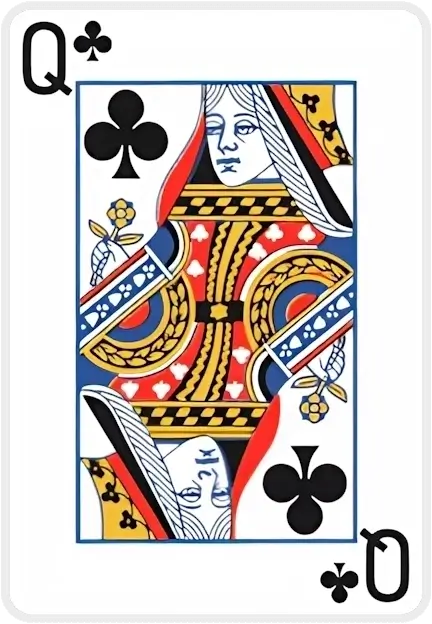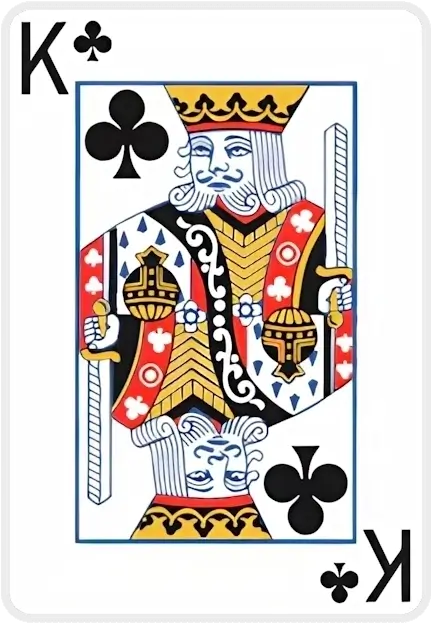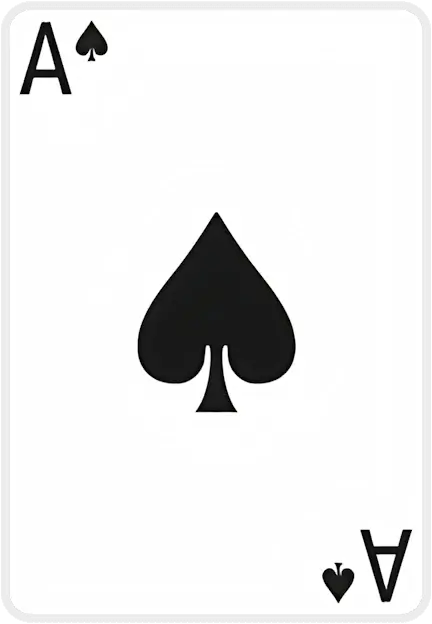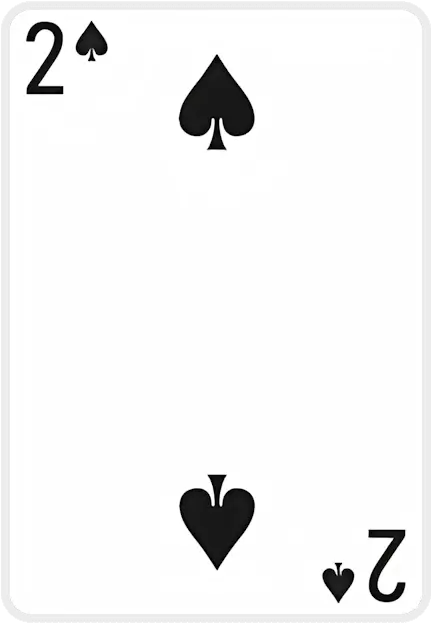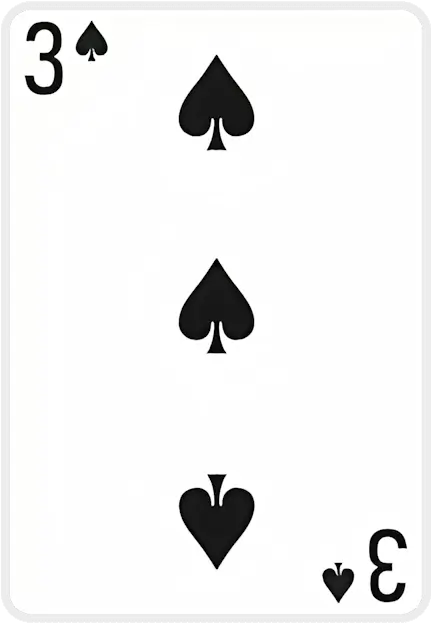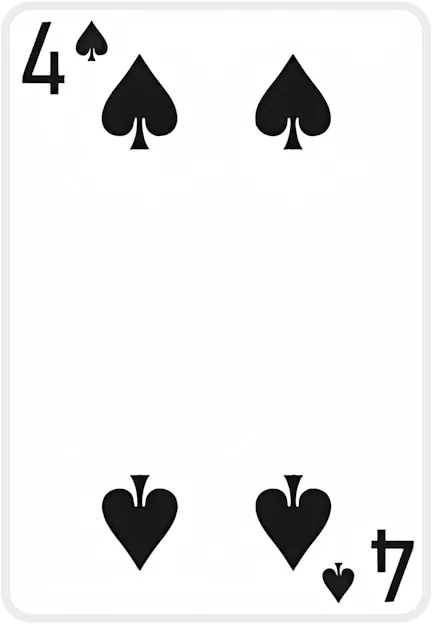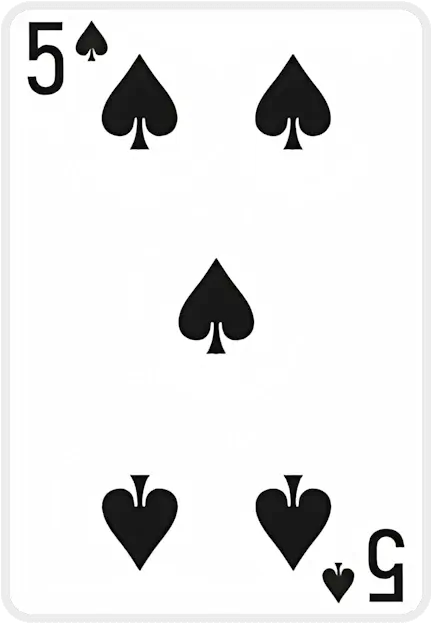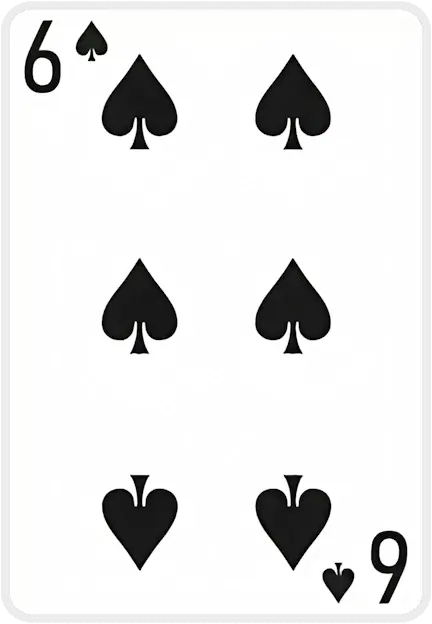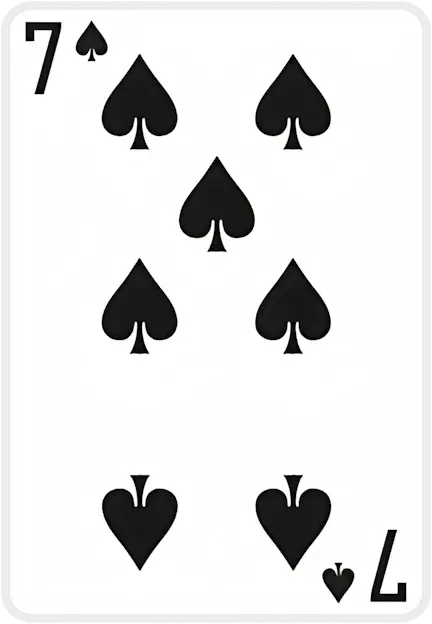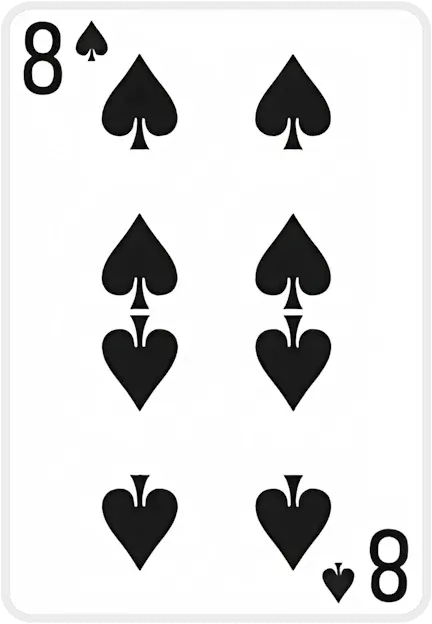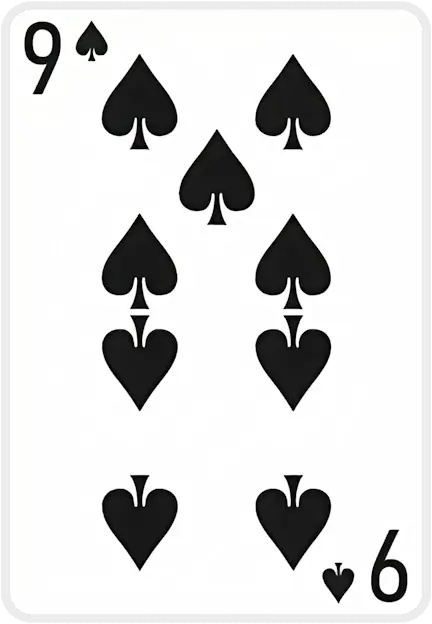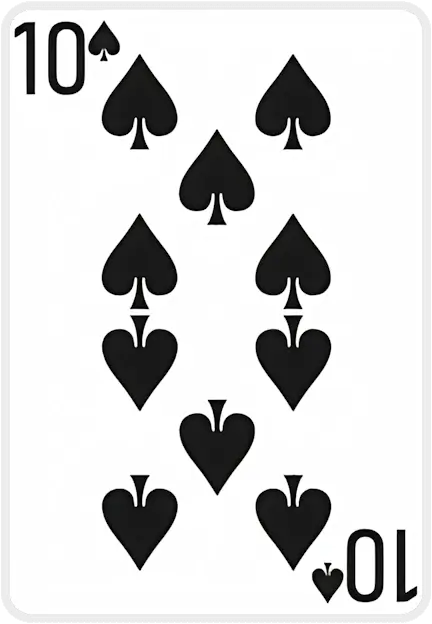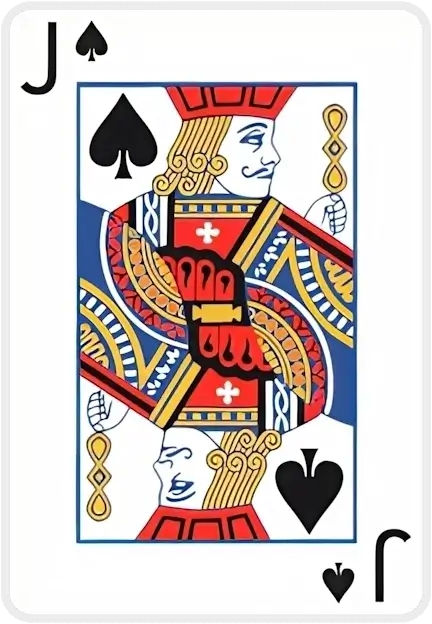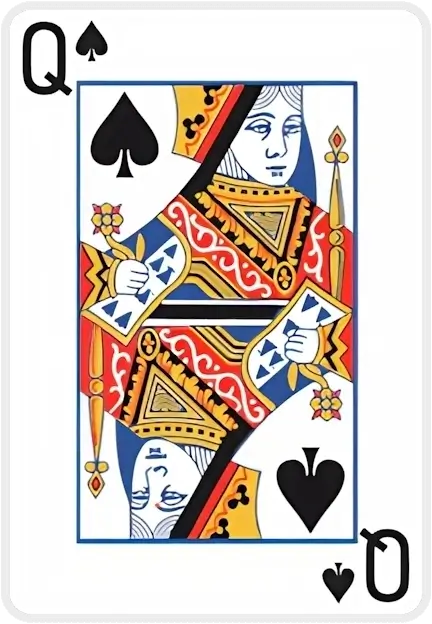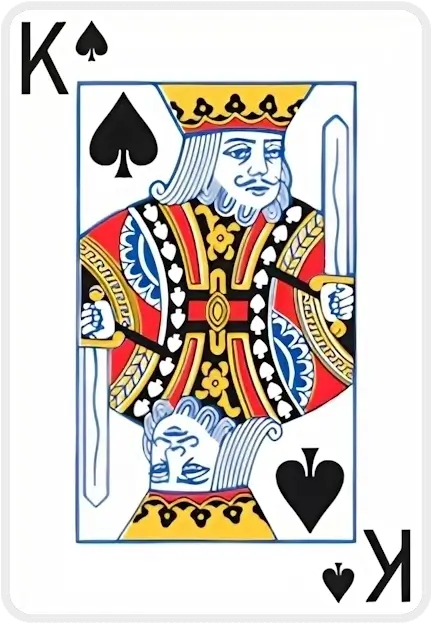Et voi pudottaa, korttisi täytyy olla vastakkaisen maan värinen.
Cannot drop, your card needs to be one rank lower
Cannot move multiple cards to foundation
Card suit doesn't match foundation pile suit
Card can only be dropped on top of a card pile
Cannot deal cards when there are empty tableau piles
You can only move {0} card(s) at a time based on the current free cells and tableau
The cards don't add up to 13 and cannot be moved
The card is inaccessible and move cannot be performed
Cards must be in sequential order (one higher or lower)
Forty And Eight Solitaire
Forty and Eight Solitaire – Play Online for Free
Introduction to Forty and Eight Solitaire
Forty and Eight Solitaire is a fun and challenging two-deck card game that offers a clever twist on the classic Forty Thieves Solitaire. In this engaging patience game, you’ll be working with 104 cards (two standard decks) and trying to move all cards to foundation piles. The game is named for its layout of forty cards on the tableau and eight foundations, and it plays very similarly to Forty Thieves – just with a slightly different setup and a few rule tweaks. Fans of solitaire love Forty and Eight for its strategic depth and rewarding gameplay; it’s considered a difficult game to win consistently, but that only makes your victories more satisfying! Whether you’re a seasoned Forty Thieves player or new to this style of solitaire, Forty and Eight Solitaire provides a fresh, enjoyable solo card game experience that will put your skills to the test.
Playing Forty and Eight Solitaire online is the best way to enjoy this game. On solitaireX.io, you can play Forty and Eight for free right in your browser – with no downloads or sign-ups needed. The casual, user-friendly interface lets you jump straight into the action, so you can start a game anytime you’re in the mood to unwind with some cards. Ready to learn how to play? Let’s break down the gameplay, rules, and some handy tips for mastering Forty and Eight Solitaire.
How to Play Forty and Eight Solitaire
If you’re wondering how to play Forty and Eight Solitaire, don’t worry – it follows familiar solitaire principles with a few unique twists. Here’s a step-by-step guide to get you started:
-
Deal and Layout: The game uses two 52-card decks shuffled together (104 cards total). To begin, deal 40 cards face-up into 8 tableau piles, with 5 cards in each pile. This tableau is the main playing area. Above the tableau, set aside space for 8 foundation piles (one for each suit in the double deck). All remaining cards (64 cards, since 104 - 40 dealt) form the stock pile, which is set face-down off to the side.
-
Goal of the Game: Your objective is to move all cards to the 8 foundations. Each foundation will be built up by suit from Ace through King. That means when an Ace becomes available, you can move it to an empty foundation to start it, then add the 2 of the same suit, 3, and so on up to King. Ultimately, you win by assembling all eight suited sequences (two sequences for each suit with two decks) from Ace to King on the foundations.
-
Tableau Gameplay: On the tableau (the 8 columns of cards), you build cards downwards in descending rank and matching suit – just like in Forty Thieves. For example, you can place a 9♥ on a 10♥, or a Q♣ on a K♣. Only the top card of each tableau pile is available to move at any time. You may move one card at a time – this game does not initially allow moving entire sequences in one go (unlike some variants). If you clear a pile so that it has no cards, that empty tableau space can be filled with any card from the waste or another tableau pile. Using empty spaces wisely is key to maneuvering cards (more on that in the Tips section).
-
Stock and Waste: When you can’t make any more moves with the tableau alone, it’s time to use the stock. Flip one card at a time from the stock pile onto the waste pile (also called the discard pile). The top card of the waste is now in play – you can move that waste card to a foundation if it fits the next sequence (e.g. play a waste Ace to start a foundation, or play a 7♦ from waste onto an 8♦ in the tableau), or move it to a tableau column if it follows the descending-suit rule. Only the top waste card is ever playable at a given moment. This step-by-step dealing from the stock continues whenever you are stuck with tableau moves.
-
Redeals (Passes Through the Stock): Classic Forty and Eight Solitaire is typically a one-pass game – there is no redeal once you’ve gone through the stock cards. This means you only get to cycle through the stock pile once, similar to the strict rules of Forty Thieves. However, some versions (and many online platforms) make the game a bit more forgiving by allowing one redeal, meaning you can gather the waste pile and flip it back over to form a new stock after the first pass is done, giving you two passes through the deck in total. On SolitaireX, the rules may allow a second pass through the stock to increase your chances (check the on-screen rules or options). If a redeal is available, use it wisely – it’s essentially your one extra lifeline once you exhaust the stock the first time.
-
Foundation Building and Winning: As you play, keep an eye out for Aces and other low cards – move Aces to foundation as soon as possible to start those stacks. Build up each foundation in ascending order by suit (Ace, 2, 3 ... up to King). You can transfer cards to the foundation from either the tableau or the waste, as long as they are the next in sequence for that suit. The game is won when all 104 cards have been successfully moved to the foundation piles, completing eight perfect suited sequences. If you run out of moves (and stock cards) before then, you’ve hit a dead end – time to try again with a new deal!
That’s all there is to it. The rules of Forty and Eight Solitaire are simple to learn, but winning the game is a real challenge. It requires careful planning and a bit of luck with the card layout. Next, we’ll summarize the key rules for quick reference, then dive into some strategy tips to improve your success rate.
Forty and Eight Solitaire Rules
For quick reference, here is a concise summary of the Forty and Eight rules and key points to remember:
-
Decks and Cards: Uses two standard decks (104 cards). All four suits are in play, and each suit will ultimately have its own foundation pile (8 foundation piles for 8 suit sequences total).
-
Initial Deal: 40 cards are dealt to form the tableau, arranged in 8 piles of 5 cards each. All tableau cards are face-up and only the top card of each pile is available for play at any time (cards beneath are “blocked” until the cards above them are moved).
-
Foundations: There are 8 foundation piles (start empty). Foundations are built up in suit from Ace to King. Only an Ace can start a foundation (move Aces to an empty foundation as soon as they become available), then each next higher rank of the same suit can be added. The goal is to get all cards onto these foundations.
-
Tableau Builds: On the tableau piles, cards must be built downward in sequence and in the same suit (e.g. 7♠ can be placed on 8♠). Only one card at a time can be moved between tableau piles in this game (you cannot move stacked sequences in one move under standard rules). When a tableau column becomes empty, you may fill an empty space with any single card (of any suit or rank) from the waste or another tableau pile to help continue play.
-
Stock and Waste: The remaining 64 undealt cards form the stock. You flip over cards from the stock one at a time onto the waste pile whenever you need new cards. The top card of the waste is available to play onto a foundation or tableau (following the same rules). You cannot directly play any card that is not on top of the waste.
-
Restrictions: You cannot move sequences as a unit (only one-by-one moves, unless you exploit empty spaces as intermediate holders – see Tips). You also cannot refill empty tableau columns with sequences (only single cards). Planning is crucial since moves are limited by suit matching.
-
Redeals: In strict Forty and Eight Solitaire rules, no redeals are allowed – you only go through the stock once. This makes the game quite challenging. Some modern versions and computer implementations allow one redeal (a second pass through the stock) to increase the win rate. Check the rules of the specific game you’re playing; if a redeal is available, remember you only get to reuse the waste pile one time.
-
Winning: You win by moving all cards to the foundations in correct order. Typically, successful play involves freeing up Aces and low cards to build foundations early, and carefully managing tableau moves so you can eventually access every card. A win isn’t guaranteed every game – in fact, even skilled players will win only around 25% of deals on average – but smart strategy greatly improves your odds.
Keep these rules in mind as you play. Next, we’ll go over some tips and tricks for Forty and Eight Solitaire to help you think like a pro and increase your chances of success.
Tips and Tricks for Forty and Eight Solitaire
Forty and Eight Solitaire is known as a difficult game, but it is definitely winnable with patience and strategy. Here are some tips and tricks to boost your winning chances and make gameplay more enjoyable:
-
Empty a Tableau Pile Early: Focus on clearing out at least one tableau column as soon as possible. An empty pile is incredibly useful because any card can be moved into an empty space. This gives you more flexibility to maneuver cards around. Often the first few moves should be aimed at completely freeing one pile – even if it means temporarily ignoring other moves. Once you have an empty slot, you can use it to park cards that are in the way and to help in moving other sequences one card at a time.
-
Uncover Aces and Low Cards Quickly: Since the goal is to build up foundations, you should try to uncover low-ranked cards (especially Aces and 2s) that might be trapped under higher cards as soon as possible. If, for example, you see an Ace or Two buried beneath a King or Queen in a tableau pile, prioritize moves that will free those low cards. Moving low cards to the foundation early opens up space and creates more opportunities to play other cards. Similarly, always move available Aces to the foundation immediately – there’s no reason to hold onto an Ace in the tableau since it can only block potential moves.
-
Deal with Kings Strategically: Kings are the highest cards and can often block entire piles. You cannot place any card on top of a King in the tableau, so a King at the top of a pile will stall that column until the King is moved. Whenever possible, move Kings out of the way. If a King can go to a foundation (i.e. when its suit’s Queen is already on the foundation), great – do it. More commonly, you’ll free a King by emptying another pile and then moving the King into that empty space. Using empty columns to relocate Kings will free up the cards that were beneath them, which is crucial for progress.
-
Use Empty Columns as Intermediate Spaces: Remember, you can only move one card at a time by the rules. However, you can effectively move a sequence by doing it in steps if you have an empty column or two to work with. For example, suppose you have a sequence you’d like to move (like 9♦-8♦-7♦ on one pile onto a 10♦ on another). You can do it by moving the 7♦ to an empty pile, then moving the 8♦ onto the 9♦, then moving that 7♦ onto the 8♦, and finally moving the whole rebuilt sequence onto the 10♦. This is a bit of a juggling act, but using empty piles as staging areas lets you rearrange and move “partial builds” effectively. This technique is similar to how you might use free cells in FreeCell solitaire – it’s an essential skill for solving tough positions in Forty and Eight.
-
Think Several Moves Ahead: Forty and Eight is a game of planning and foresight. Before you make a move, consider how it will affect your ability to access other cards. Try to visualize the consequences: if you play that 5♠ onto the 6♠, does it free a crucial card or just bury a different card you might need? Make moves that open up options and avoid ones that lead to dead ends. Sometimes it’s better to hold off on a move until you’ve examined other possibilities. With practice, you’ll get better at spotting the sequences that lead to success.
-
Manage the Waste Pile Wisely: The waste pile (stock draw pile) can be both a help and a hindrance. Always play cards from the waste to the tableau or foundation if they immediately help. But avoid moving a waste card to a tableau if that same rank and suit is already sitting on top of another tableau pile blocking it. For example, if you have a 5♣ on top of a tableau pile, and the waste shows another 5♣, playing that duplicate 5♣ from waste onto some other 6♣ doesn’t actually progress the game – it just uses up your waste draw and leaves the original 5♣ still stuck. In such cases, it might be wiser to leave the waste card for later (or discard it by continuing to flip) rather than play it in a futile spot. This tip comes down to not placing duplicate ranks in positions where they don't help unlock anything new.
-
Use Undo and Hints (online play): If you’re playing Forty and Eight Solitaire online (especially on solitaireX.io), take advantage of the tools available. The Undo button is your friend – it lets you backtrack and try a different approach if you realize the sequence of moves you made has boxed you in. Unlimited undos mean you can experiment without penalty, which is great for learning strategy. Similarly, a Hint feature can nudge you toward a possible move if you get stuck and can’t see any moves. Just remember that hints might not always show the best move, just an available one, so use them wisely. These tools can help reduce frustration and improve your skills over time.
By applying these strategies, you’ll find that you win more often and enjoy the game even when you don’t win. Forty and Eight Solitaire rewards careful thinking and adaptability. Every deal is a new puzzle, so stay patient, plan ahead, and celebrate the small wins (like finally freeing that buried Ace!) that get you closer to victory.
History of Forty and Eight Solitaire
Every card game has a story, and Forty and Eight Solitaire is no exception. This game is a member of the Forty Thieves solitaire family, which dates back to at least the 19th century. The original Forty Thieves Solitaire is famously known as Napoleon at St. Helena, due to a legend that Napoleon Bonaparte spent his exile playing solitaire (hence the Napoleonic nickname). Forty Thieves itself was named for the 40 cards dealt to the tableau at the start of the game – a nod to the tale of “Ali Baba and the Forty Thieves,” reflecting that you have to “steal” victory from a difficult deal. Over the years, this punishing two-deck game became popular among solitaire enthusiasts and spawned many creative variations.
Forty and Eight emerged as one of those Forty Thieves variants. Instead of the 10 columns of 4 cards used in classic Forty Thieves, Forty and Eight was designed with an 8-column tableau (five cards per pile) and other slight rule changes. The name "Forty and Eight" likely highlights the 40 cards on the tableau and the 8 foundation piles you need to fill to win – essentially describing the setup and goal. This variant appeared in various solitaire collections and software over the 20th century as players looked for ways to make Forty Thieves more approachable or just to mix things up. By adjusting the number of piles and allowing a redeal, Forty and Eight gives the player a little better chance to win while retaining the fundamental challenge of the original game.
While the exact origin and inventor of Forty and Eight Solitaire are not well documented (unlike some themed games named after historical figures, this one is named for numbers), it has become a staple in many solitaire apps and books. It’s one of the “classic” variants you’ll often find alongside others like Josephine, Ali Baba, or Congress, which each put their own twist on Forty Thieves. Today, Forty and Eight remains popular among solitaire fans who want a difficult game that’s slightly more forgiving than unmodified Forty Thieves. If you enjoy the history and legacy of solitaire games, playing Forty and Eight connects you to that tradition of classic card puzzles passed down through generations of players.
Why Play Forty and Eight Solitaire Online
Playing Forty and Eight Solitaire online is hands-down the easiest and most convenient way to enjoy this game. Here are some great reasons to try Forty and Eight on SolitaireX.io rather than dealing out two decks by hand:
-
Instant Access, No Hassle: With online play, there’s no setup or cleanup. No need to shuffle 104 cards yourself or clear off a table – just go to the Forty and Eight Solitaire page and start a new game with a click. It’s perfect for a quick game on your coffee break or a relaxed evening session. Plus, on solitaireX.io you don’t need to download any app or software, and there’s no registration required to play. You can play Forty and Eight free anytime, anywhere, whether you’re on a computer, tablet, or smartphone.
-
User-Friendly Interface: SolitaireX.io offers a clean, intuitive interface that makes playing easy and enjoyable. The cards are displayed clearly with large symbols (great if you don’t have perfect vision), and the game controls are straightforward. You can drag and drop cards or simply click them to move to a valid spot. The website also provides handy on-screen buttons for actions like “Undo” and “Hint,” which are especially useful in a game as challenging as Forty and Eight. Even if you’re a casual player or a senior who’s not super tech-savvy, the interface is welcoming and simple to understand.
-
Helpful Features: When you play Forty and Eight Solitaire online on solitaireX.io, you get modern conveniences that make the game more fun. For example, you have unlimited undo – feel free to experiment or undo a mistake without penalty. There’s also a hint button to suggest a move if you get stuck and need a nudge. The game will automatically enforce the rules (so you can’t make illegal moves by accident), and it may auto-move cards to foundations for you when possible. These little quality-of-life features let you focus on strategy and enjoyment rather than on remembering every rule.
-
Statistics and Leaderboards: One cool thing about playing on SolitaireX is that you can track your progress over time. The platform often includes detailed statistics, so you can see how many games you’ve won, your fastest win times, win percentage, and other fun metrics. There might even be a global leaderboard where you can compare your performance with other players. This adds a bit of extra motivation – can you beat the average win rate or rise up the ranks by mastering Forty and Eight Solitaire? Even if you’re just playing casually, it’s satisfying to watch your own skills improve as those stats get better.
-
Play Anytime, Anywhere: Online solitaire is available 24/7. You can start a game on your phone while waiting in line, pause it, and resume later on your laptop – SolitaireX.io saves your progress. There’s no commitment and no pressure; you can play for two minutes or two hours. And because it’s free to play, you can keep dealing new games until you conquer one, without worrying about running out of decks or cards. It’s solitaire on your terms.
In short, playing Forty and Eight Solitaire online gives you all the enjoyment of the classic card game with none of the inconvenience. You’ll appreciate the smooth experience on SolitaireX.io that lets you dive right into strategy and fun. Now that you know the why and how, let’s see what other similar games you might like to explore.
Related Games – Forty Thieves Variations
Forty and Eight Solitaire is part of a family of Forty Thieves-style games, and if you enjoy its gameplay, there are several related solitaire variants worth trying. These games share the two-deck, 8-foundation format of Forty Thieves but each has its own twist. On SolitaireX.io, you can find a whole collection of Forty Thieves variations on the Forty Thieves Solitaire games page. Here are a few popular related games:
-
Forty Thieves Solitaire: The classic game that started it all. If you haven’t played the original, give it a go to appreciate why it’s famously challenging. Forty Thieves uses the same 104 cards and 8 foundations but deals 10 columns of 4 cards each and typically allows no redeals, making it even tougher than Forty and Eight. It’s also known as Napoleon at St. Helena and is a true test of patience.
-
Josephine Solitaire: This is a very popular variant of Forty Thieves (in fact, Josephine was designed to make Forty Thieves more winnable). The rules are the same as classic Forty Thieves except Josephine allows you to move groups of cards in the tableau if they are in sequence and same suit, rather than one card at a time. This single change boosts the win rate significantly and makes the game more forgiving for casual play. Josephine is a great next step if you enjoy Forty and Eight but want a slightly easier challenge.
-
Ali Baba: In Ali Baba, you only use one deck of cards (52 cards) but you deal ten tableau piles with 4 cards each (so 40 cards on tableau, similar layout concept). It’s essentially a single-deck cousin of Forty Thieves. Despite fewer cards, Ali Baba can still be tricky because you still build down by suit and only move one card at a time. It’s a nice quicker game with the same feel.
-
Thieves of Egypt: This variant starts with a unique pyramid-shaped tableau and some cards face-down, adding a fresh twist to the Forty Thieves formula. You still build down in suit and aim to get everything to the foundations, but the layout and deal pattern are different, which affects strategy. Thieves of Egypt is featured on SolitaireX.io and is a favorite for its thematic layout and challenging play (it’s like a meeting of Pyramid solitaire and Forty Thieves).
-
Lower 48: If you like the idea of Forty and Eight but find building in-suit too restrictive, you might enjoy Lower 48. This offshoot uses the same 8 tableau piles of 5 cards (40 cards) layout but changes the building rule to alternate colors instead of same suit, which makes it easier to create moves. Lower 48 also typically allows one redeal. The name comes from the fact that alternate-color building significantly lowers the difficulty compared to in-suit games – a fun play on words with “Forty and Eight” and the US “Lower 48” states. It’s a great practice game before tackling the harder in-suit versions.
These are just a few examples – the Forty Thieves family has many members (such as Congress, Parliament, Diplomat, Red and Black, and more). Each variation tweaks the rules (number of piles, building conditions, redeals, etc.) to create a different experience. You can explore all these free solitaire games on SolitaireX.io’s Forty Thieves collection page. If you’ve mastered Forty and Eight Solitaire, see how you fare against its siblings! You might discover a new favorite, or learn strategies in one game that help you in another.
Play Forty and Eight Solitaire Online Now (Call to Action)
Ready to put your skills to the test with this exciting solitaire variant? Forty and Eight Solitaire is waiting for you – and it’s just a click away. Head over to solitaireX.io’s Forty and Eight Solitaire game and play now for free! Whether you’re aiming to beat that 25% win-rate odds or just looking to relax with a strategic card game, this is the perfect opportunity to enjoy a round (or several) of Forty and Eight.
Hit the “New Game” button on the page, and the cards will be dealt out instantly in your browser. No download, no login, no fuss – you’ll be immersed in a game within seconds. Challenge yourself to conquer the tableau and build all eight foundations. Can you organize the forty cards and eight foundations into a winning layout? There’s only one way to find out – give it a try!
Play Forty and Eight Solitaire online at solitaireX.io and experience the fun of this Forty Thieves-style game anytime you want. Good luck, and enjoy the game!
Case Studies
All figures below come directly from our database. Using first-party data ensures every insight is evidence-based, up-to-date, and privacy-respectful.
| Game Tier | Stand-out Titles | Win Rate |
|---|---|---|
| Quick Wins | Spider (1 Suit), Hole-in-One, TriPeaks | 70–84% |
| Fair Challenges | Solitaire (Draw 1) – 913 k plays FreeCell, Golf |
45–63% |
| Expert-Level | Spider (4 Suits), Forty Thieves, Double Scorpion | ≤11% |
Curious which moves turn the odds in your favor? Explore all the data & strategies →
What people say about us
Interview with Beverley Walker-Daury
At 87, Beverley Walker-Daury shares how SolitaireX brings joy, companionship, and purpose to her days in a retirement home.
Player Interview: Poul Andersen
Poul Andersen shares how playing SolitaireX helps him keep his brain sharp and active.
Player Interview: Peter Gross
Peter Gross, 81, shares how SolitaireX became his go-to place for relaxing Freecell games and friendly competition.
Player Spotlight: St0Sh0’s Record-Breaking Runs on SolitaireX
We sit down with speed-solitaire sensation St0Sh0 to talk record times, favorite variants, and why SolitaireX is his go-to card-game hub.
Fresh from the SolitaireX Blog

Decks & Destinations: The Solitaire Traveler Series Part 5: Berlin — Strategy & Culture Walks
Berlin’s rhythm of reflection and structure pairs perfectly with Solitaire’s calm logic. This guide invites travelers to explore the city’s culture and canals with a few mindful moves between each stop.

Decks & Destinations: The Solitaire Traveler Series Part 4: Tokyo – Mindful Play in a Fast City
Tokyo’s fast pace hides countless moments of calm — perfect for a mindful round of Solitaire. This traveler’s guide pairs iconic spots with short, focused play sessions to restore clarity on the go.

Decks & Destinations: The Solitaire Traveler Series Part 3: Seattle — The PC-Era Vibe
Seattle’s rain-washed calm pairs perfectly with Solitaire’s quiet focus. This traveler’s guide shows how to blend sightseeing, coffee breaks, and short, finite puzzles into a mindful PC-era rhythm.

Decks & Destinations: The Solitaire Traveler Series Part 2: London – From “Patience” to Presence
London’s slower moments pair perfectly with Solitaire—once known locally as “Patience.” This traveler’s guide blends calm city rhythms with mindful card play to help you recharge between adventures.
Latest guides crafted by Stoyan Shopov and Kalin Nikolov
Golf Solitaire Mastery: Strategy, Stats & Flow
Deal 7 columns of 5 face‑up cards (35 total). The remaining 17 cards*form the stock; flip the first stock card to start the waste. You may move only exposed tableau cards, and only if the rank is exactly one higher or lower than the waste top. Suits don’t matter. When no move exists, flip a new waste card. Clear all tableau cards to win.
TriPeaks Solitaire Mastery: Strategy & Analytics
Two peaks are dust; one stubborn ridge remains. Your waste shows a 9. The tableau flashes 10‑J‑10‑9‑8 like a heartbeat. You nudge the 10, feel the cadence lock in, and—without overthinking—trace a neat descent that crumbles the last peak. That tiny spark of *flow* is why TriPeaks hooks serious players: rhythm, restraint, and the rush of a run that arrives exactly on time.
Pyramid Solitaire Mastery: Strategy, Stats & Joy
Picture the pyramid down to its last stubborn tier: a Queen pinned beneath a ridge, a lone Ace on the waste, and a King begging to be burned for tempo. Heartbeat, breath, click—then the whole structure yields in a rush. If you’ve hit that razor‑edge finale, you already know Pyramid’s secret: small decisions, made in the right order, change everything.
FreeCell Solitaire Mastery: Strategy & Analytics Guide
I have a 15 years personal, lived experience—picture a scene built from thousands of session logs and notes from serious players: It’s late, and the board looks jammed. You clear a single column, free one cell, and suddenly a 9♣‑8♦‑7♣‑6♦ chain glides into place, untying the knot you stared at for ten minutes. The rush isn’t luck—it’s the quiet pleasure of a plan snapping into focus. When did FreeCell last feel less like “killing time” and more like practicing a craft you can actually master?
Media About Us
0


